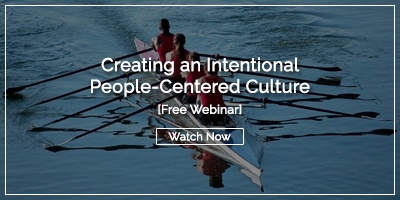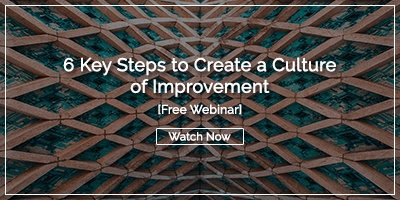
A cultural assessment is an internal evaluation process that helps leaders understand their workplace culture by analyzing behavioral patterns, values, and beliefs throughout the organization. This systematic approach enables businesses to align their culture with strategic objectives, improve employee satisfaction, and drive organizational performance through targeted cultural improvements.
What Is a Cultural Assessment and Why Does It Matter?
A cultural assessment is an internal exercise in which leaders evaluate the overall workplace culture. Cultural assessment tools attempt to analyze both the implied and expressed attitudes and beliefs held by the organization. With these assessment tools, leaders can define the organization's expectations, philosophies, experiences, values, and mission that set the stage for individual behavior.
Key components of cultural assessment include:
- Analyzing organizational values and mission alignment
- Evaluating behavioral norms and expectations
- Understanding leadership philosophies and approaches
- Assessing employee experiences and engagement levels
- Identifying gaps between desired and actual culture
Which Cultural Assessment Tools Should You Use?
The Organizational Culture Assessment Instrument (OCAI)
There are multiple models organizations use to assess their internal cultures. Some use interviews, focus groups, or surveys. One of the most widely used tools is the Organizational Culture Assessment Instrument (OCAI), developed by researchers at the University of Michigan. The OCAI helps organizations in all industries create an outline of their culture, understand how it plays out in day-to-day operations, and identify what elements of the culture they would like to change.
The OCAI is based on the Competing Values Framework (CVF), which defines the elements used to assess organizational effectiveness. The CVF details four primary workplace culture types. They are based on the competing values of stability and flexibility and internal or external orientation. These are the four culture types that are described in the CVF and used in the OCAI:
| Culture Type | Characteristics | Common Industries | Key Focus |
|
Create Culture |
Risk-taking, innovation, experimentation |
Technology, Startups |
Growth and market disruption |
|
Collaboration Culture |
Teamwork, traditions, constituent care |
Healthcare, Government, Education |
People and relationships |
|
Control Culture |
Rules, policies, formal procedures |
Banking, transportation, military |
Efficiency and stability |
|
Compete Culture |
Results-driven, deadline-focused |
Sales, marketing, manufacturing |
Performance and competition |
Alternative Assessment Methods
Quantitative approaches:
- Employee engagement
surveys - Culture pulse surveys
- 360-degree feedback assessments
- Performance management data analysis
Qualitative approaches:
- Focus groups with cross-functional teams
- One-on-one interviews with key stakeholders
- Gemba walks (observational assessments)
- Town hall feedback sessions
Pro tip: Combine both quantitative and qualitative methods for the most comprehensive cultural picture.
What Are the Six Critical Cultural Principles to Assess?
Whether you choose to use the OCAI or other tools to conduct your cultural assessment, it is helpful to pay particular attention to the critical principles defined by the OCAI. They include:
1. Dominant Characteristics
Dominant characteristics are the current beliefs, norms, attitudes, and values that underlie most actions taken by stakeholders, including employees and leaders.
2. Organizational Leadership
Organizational leadership is how executives, leaders, and other decision-makers serve stakeholders. It may be through coaching, democracy, authoritativeness, autocracy, or another style.
3. Management of Employees
Management of employees is how leaders supervise, develop, and interact with employees daily and long-term.
4. Sources of Connection
Connection is about the ingrained shared values and beliefs that pull members of an organization together as they embrace a common mission and strive toward the same goals.
5. Strategies and Tactics
These are the actions that define how organization members conduct their professional duties. They include processes, workflows, and tools.
6. Definition of Success
The objectives and outcomes that organization members recognize as desirable and worth pursuing, often revealing alignment or misalignment issues.
What Benefits Can You Expect from Cultural Assessment?
Enhanced Organizational Performance
Cultural assessment helps identify strengths and improvement areas, enabling better alignment between values and strategic goals. This alignment creates positive work environments that boost employee engagement and productivity.
Performance improvements typically include:
- Increased operational efficiency
- Better decision-making processes
- Improved innovation and creativity
- Enhanced customer satisfaction
- Stronger financial performance
Improved Employee Satisfaction and Retention
Understanding cultural factors that drive satisfaction helps organizations create more supportive environments. Early identification of cultural gaps allows proactive intervention.
Retention benefits include:
- Reduced turnover costs
- Higher employee motivation
- Improved workplace morale
- Better work-life balance
- Increased job satisfaction scores
Enhanced Diversity and Inclusion
Cultural assessments provide an opportunity to evaluate diversity and inclusion within an organization. The assessment helps in recognizing and valuing diverse perspectives, experiences, and backgrounds, leading to greater creativity, innovation, and collaboration among employees.
Effective Change Management
When organizations undergo significant changes such as mergers, acquisitions, or restructuring, understanding the existing culture and its potential impact on the change process is essential. A cultural assessment helps identify potential resistance points and informs the development of strategies to address them effectively, enabling smoother transitions and successful change implementation.
How Do You Conduct a Cultural Assessment?
Step 1: Choose Your Assessment Tools
You have many options, so take the time to consider which tools will best fit your organization's needs. Some tools, such as surveys, will give you data-driven results, while others, such as Gemba walks, focus groups, and informative interviews, will provide more intangible information. Generally, a combination of both is the best way to gather holistic results. Employee engagement is also an essential element of culture. Improvement management software can be an important tool for cultural assessment.
Step 2: Compile the Results Impartially
Once you've decided which cultural assessment tools will be most beneficial to you, it is vital to be impartial during the analysis process because self-reported information, especially the intangible elements, can lead to biased assessments. Understanding and analyzing your own culture is challenging, and it is normal to want to skew the data one way or another. To avoid this and ensure a thorough review, using the six principles we outlined above as data categories may be helpful.
Best practices for impartial analysis:
- Use external facilitators when possible
- Implement blind data collection methods
- Cross-reference multiple data sources
- Document both positive and negative findings
- Validate findings with additional stakeholders
Step 3: Analyze Results and Draw Conclusions
Look for patterns identified by stakeholders and think about how they relate to the six culture principles we outlined. For example, if 70% of people could not explain the values and shared goals of the organization, you should look for ways to improve cultural connection. Likewise, if 60% of employees don't receive regular feedback on their performance, employee management may have gaps.
Step 4: Devise Your Cultural Change Plan
Once you've completed this exercise, you will be ready to implement a plan for cultural change. Make sure any changes you implement are targeting the gaps you've identified and that they are aligned with your organization's strategic goals and objectives.
Change plan components:
- Specific, measurable cultural goals
- Timeline for implementation phases
- Resource allocation and budget
- Communication strategy
- Progress measurement methods
- Leadership accountability measures
Frequently Asked Questions About Cultural Assessment
How often should organizations conduct cultural assessments?
Most experts recommend annual comprehensive assessments with quarterly pulse surveys to track progress and identify emerging issues early.
What's the difference between culture surveys and cultural assessments?
Culture surveys collect employee opinions and experiences, while cultural assessments analyze behavioral patterns, organizational systems, and alignment between stated and lived values.
Can small organizations benefit from cultural assessment?
Absolutely. Small organizations often see faster cultural change implementation due to fewer layers and more direct communication channels.
What role does leadership play in cultural assessment success?
Leadership commitment is crucial. Leaders must model desired behaviors, communicate transparently about findings, and allocate resources for identified improvements.
How do you measure cultural assessment ROI?
Track metrics like employee engagement scores, retention rates, productivity measures, customer satisfaction, and financial performance before and after cultural initiatives.
Should cultural assessment be conducted internally or with external help?
External consultants provide objectivity and expertise, while internal teams offer deeper organizational knowledge. Many organizations use a hybrid approach for optimal results.




Add a Comment